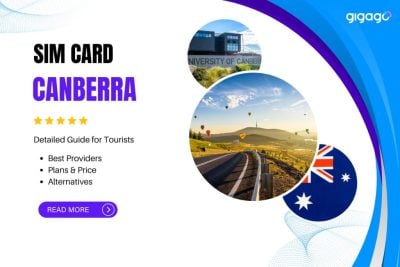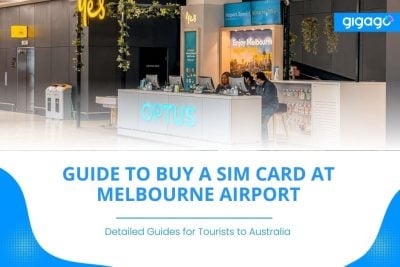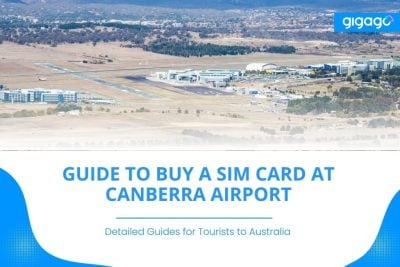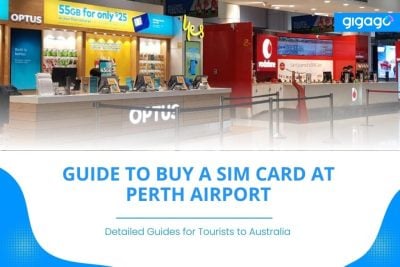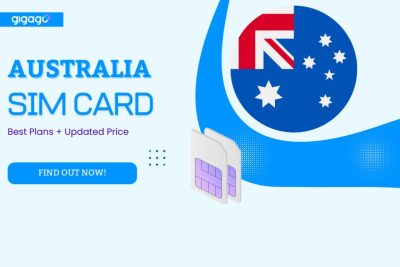This guide aims to help you choose the most suitable mobile carrier and SIM card plan to enjoy affordable internet access.
How to Get Mobile Internet in Australia for Travelers: What Option to Choose?
Mobile internet in Australia is a crucial consideration for travelers visiting the vast and remote regions of the country.
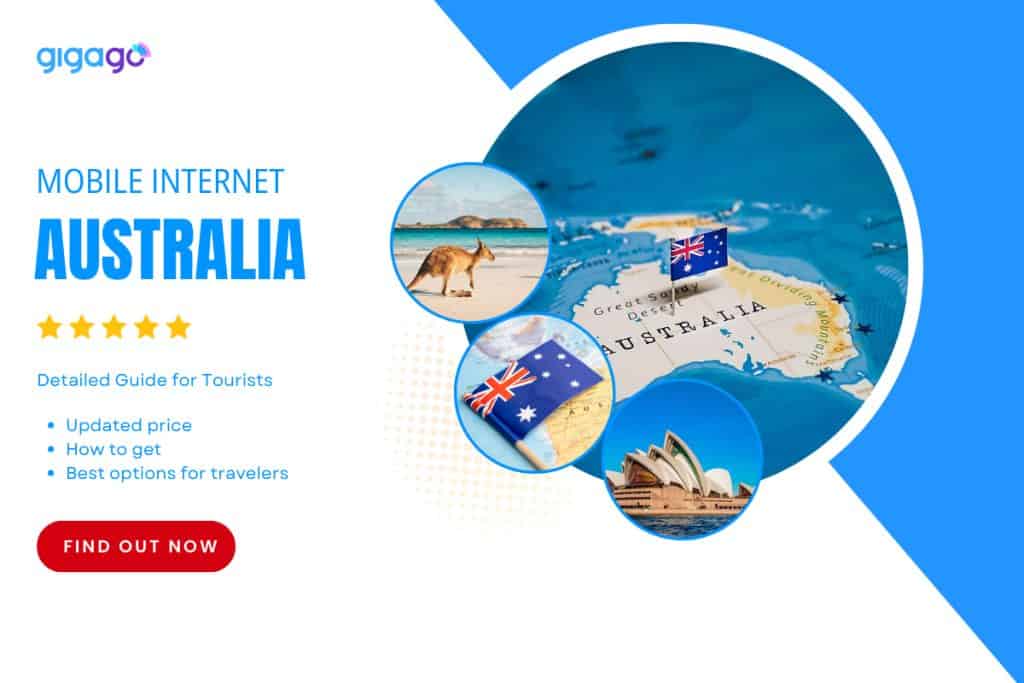
Whether you’re traveling for work, adventure, or fun, finding good and cheap mobile internet in Australia can be a daunting task. From the big outback to busy cities, the internet is key for staying in touch, finding your way, and sharing your stories. This article will help you understand your options for mobile internet in Australia, so you can pick the best one for your needs and money.
In this article
I. Mobile Internet in Australia – Coverage and Speed
In this large country like Australia, let’s see how strong and fast mobile coverage and speed are.
1. Australia Mobile Internet Coverage
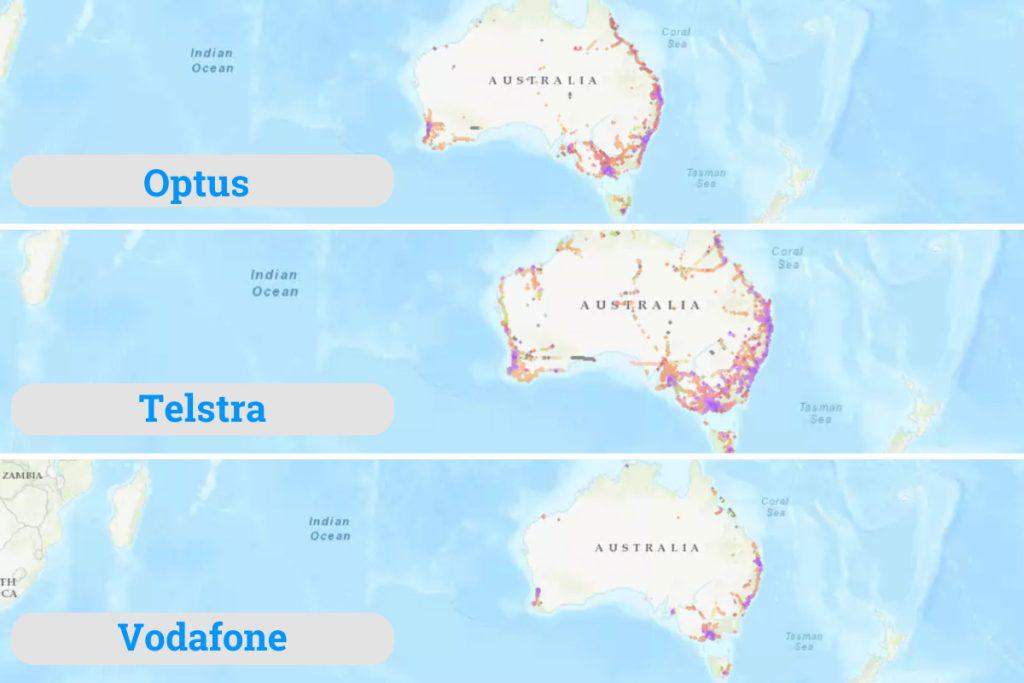
Mobile internet coverage is an important issue in Australia given its large geographic size and remoteness of some areas. According to Opensignal’s October 2023 report:
- Coverage: Telstra tops with 9.4/10, then Optus (8.2), Vodafone (6.3).
- 5G Coverage: Telstra first with 5.5, Optus (3.2), Vodafone (2.9).
- Availability: Almost 99% for all. Telstra 99.1%, Optus and Vodafone at 99.2%.
As you see, Telstra tops Australia’s mobile internet coverage, excelling in both populated and remote areas. With superior 3G/4G/5G reliability, it stands out as the best choice for comprehensive network coverage in this vast country.
2. Australia Mobile Internet Speed
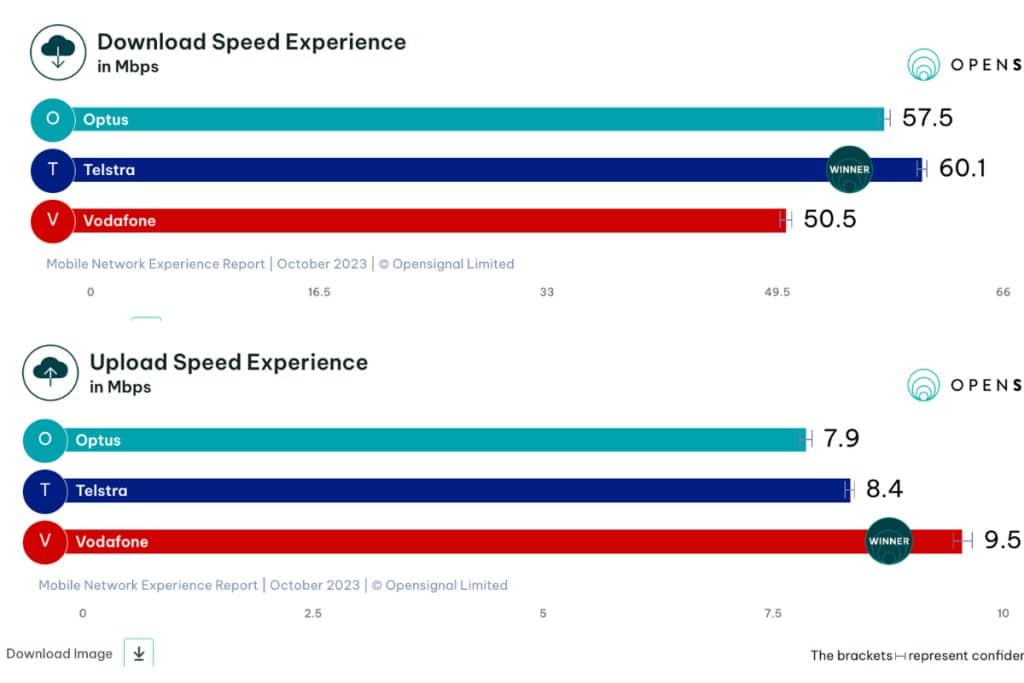
Opensignal’s October 2023 report says Telstra has Australia’s fastest mobile internet.
- Overall download speed: Telstra had the fastest at 60.1 Mbps, beating Optus’ 57.5 Mbps and Vodafone’s 50.5 Mbps.
- 5G download speed: Optus was the fastest at 226.5 Mbps, but Telstra was more reliable across all tech.
- 5G upload speed: Telstra was best too, at 16.7 Mbps.
- Telstra had the highest download speeds in most places, except NT and Victoria where Optus was top.
So, there’s no doubt that Telstra is a great choice for fast-speed mobile.
II. What are Connectivity Options for Tourists to Australia?
Here are the main ways tourists can connect to the internet in Australia:
- Australia SIM card
- Australia eSIM
- Roaming
- Public Wifi
- Pocket Wifi
Let’s see which connectivity method is the fittest for you.
| Option | How it Works | Cost | Where to Buy | Pros | Cons |
| Australia SIM Card | Physical SIM card inserted into the phone. Provides a local Australian number and data plan. | Affordable (e.g., $10-$30 for a tourist SIM with data) | Expensive roaming fees and potentially low speeds | Local rates for calls/data, stable connection, and no roaming fees | Requires a SIM slot and unlocked phone |
| Australia eSIM | Digital SIM activated on a compatible phone. Provides a local Australian number and data plan. | Similar to physical SIM costs | Online (e.g., Gigago) | No physical SIM required, seamless activation, local rates for calls/data, and no roaming fees | Requires an eSIM-compatible phone (check list) |
| Roaming with Home Operator | Using your home mobile plan while in Australia. | Can be expensive (high roaming fees) | Enabled through your home operator | Keeps your home number and no need to change SIMs | Expensive roaming fees and potential low speeds |
| Public WiFi | Connecting to free public WiFi hotspots. | Free | Restaurants, cafes, hotels, etc. | Free | Limited availability, potential security risks, and no mobile data |
| Pocket WiFi | Portable battery-powered WiFi device that provides internet access. | Rental fees (e.g., $5-$10 per day) | Airport kiosks, telco stores | Shared internet access for multiple devices and no roaming fees | Limited battery life, rental costs can add up, and no mobile data on the go |
► Recommendation: The best choice is to get an eSIM from an outside seller like Gigago. Gigago has cheap eSIM plans for Australia that you can activate online before your trip anytime. With an eSIM, you’ll get fast LTE service on the Optus network in both cities and far-off places.
III. Internet Rates in Australia
Good to know: 1 AUD = 0.66 USD (May 2024)
Australia offers a variety of ways to stay connected during your travels, each with its own costs. Let’s explore their respective rates:
| Option | Data | Cost (USD) | Validity |
| Australia SIM Card | 5GB | 15 | 30 days |
| 10GB | 25 | 30 days | |
| 20GB | 40 | 30 days | |
| Australia eSIM | 1GB | 6 | 7 days |
| 3GB | 12 | 14 days | |
| 5GB | 18 | 30 days | |
| Roaming with Australia | Varies by provider | Varies by provider | Varies by provider |
| Public WiFi | Free | Varies by location | Varies by location |
| Pocket WiFi | 1GB/day | 10 | 1 day |
| 3GB/day | 25 | 7 days | |
| 5GB/day | 40 | 30 days |
Note: Prices might change based on the provider and plan.
► Recommendation: For tourists in Australia, the best mobile internet depends on their needs and budget.
- Short visits (less than a week): An eSIM with 1-3GB is a good choice.
- Staying a week or more: A SIM card with 5-20GB is better value.
- On a tight budget: Use public WiFi for basic internet, but there might be limits.
- Need internet everywhere: Pocket WiFi has unlimited data but costs more.
IV. Data SIM Card for Mobile Internet in Australia
Here’s a breakdown of some leading data SIM card packages from major operators:
| Operator | Plan Name | Data | Price (AUD) | Price (USD) | Expiry | Ideal For |
| Telstra | Prepaid Mobile Broadband Go Plan | 70GB | $160 | $106 | 365 days | Longer stays or high data usage |
| Telstra | Prepaid Data Pack | 10GB | $30 | $20 | 30 days | Shorter trips or moderate data needs |
| Optus | Choice Plus Data Plan | 20GB | $20 | $13 | 30 days | Moderate data usage |
| Optus | Traveller SIM | 60GB | $35 | $23 | 28 days | Short-term travel with generous data |
| Vodafone | Prepaid Data Pack | 40GB | $40 | $26 | 28 days | Moderate to high data usage |
| Vodafone | Traveller SIM | 40GB | $45 | $30 | 28 days | Short-term travel with decent data |
Note: Prices and plans may change over time. It's recommended to check the operator's websites for the latest information before purchasing a SIM card.
V. Data eSIM for Australia – Best Option to Get Mobile Internet for Tourists
There are 2 ways to get a data eSIM for Australia:
- Buy from Australian operators: Telstra, Optus, and Vodafone.
- Buy from Gigago: A reputable eSIM provider.
1. Buy eSIM from Australian Operators
How to buy:
- Visit the operator’s website or app.
- Choose an eSIM plan.
- Enter your details and payment information.
- Install the eSIM on your phone.
Pros: Wide network coverage and reliable connection.
Cons: Can be expensive and may require additional documentation.
2. Buy eSIM from Gigago:
How to buy:
- Go to Gigago’s website.
- Search for “Australia”.
- Choose a plan that suits your needs and budget.
- Make payment.
- Wait to receive an email with instructions.
- Scan the QR code or import the activation code manually.
- Turn on data roaming on your phone.

For Australia, Gigago offers multiple data plan options, starting from 1GB/day for 5 days with $ 3.0 . What is great about Gigago’s Australia eSIM is that its plans’ costs are diversifying, varying between $ 3.0 – $ 220.5 .
Thus, it does not matter how many Internet users you are and how long your trip is in Australia, there is always an option for you with Gigago.
VI. FAQs about Mobile Internet in Australia
Is 5G available in Australia yet?
5G networks have been rolled out by Telstra, Optus, and Vodafone in select cities only so far. Coverage is expanding.
How can I check my mobile carrier’s coverage map?
All major carriers have coverage maps on their websites to check reception by location.
Do I need to sign a contract for mobile plans?
Postpaid plans require 12-24 month contracts. Prepaid plans are contract-free but can be more expensive per GB.
Can I use my Australian mobile plan overseas?
Most providers offer international roaming in certain countries for an extra fee. Otherwise a local SIM is needed.
VII. Conclusion
Mobile internet in Australia is much better now, with wide coverage and fast speeds in big cities and towns. With more 5G, it’ll get even faster. People need good internet for work, school, and fun today. Efforts are being made to bring better internet to remote areas, aiming to give all Australians access to new mobile tech.
